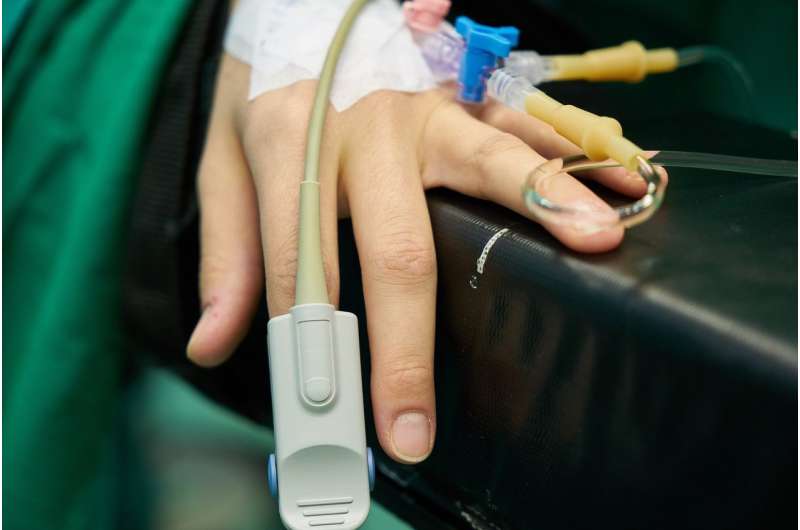Microvascular dysfunction—a common cause of heart failure with preserved pumping capacity

Microvascular dysfunction, or small vessel disease, can be an important cause of heart failure with preserved ejection fraction (preserved pumping capacity), according to an international team including researchers from Karolinska Institutet and AstraZeneca. Their study is published in The European Heart Journal. The results could play a crucial role in identifying people at risk for this type of heart failure, and could also contribute to the development of new drugs.
Heart failure is the most common reason for hospitalisation and causes much suffering. Heart failure with preserved ejection fraction, which is one of the two main types of heart failure, lacks scientifically proven treatments, and more research is needed to understand how the disease develops and might be treated.
Scientists at Karolinska Institutet, along with colleagues from AstraZeneca and four other groups in Sweden, the U.S., Finland and Singapore have now conducted a study of over 200 patients with this type of heart failure. The study involved the use of an innovative coronary imaging protocol developed by Professor Li-Ming Gan's research group in the IMED Biotech Unit in order to obtain a patient-friendly, cost-effective way to test the coronary artery's ability to increase blood flow—coronary flow reserve (CFR)—in addition to the traditional imaging approach to generate overall picture of the heart's structure and function.
"Being able to identify patients with heart failure with preserved ejection fraction is not only key to improving patient outcomes through early diagnosis, but also to understand the causal mechanisms underlying the disease so we can develop future targeted therapies," says Professor Li-Ming Gan, chief scientist and senior medical director, IMED Biotech Unit, AstraZeneca.
The results of the study, which is the first of its kind, show that 75 percent of the patients had what is known as microvascular dysfunction. This is a disease in which the coronary artery shows no sign of narrowing or plaque in radiographs, but has damage to the endothelium that coats the inside of the blood vessels. The blood vessels do not work as they should, which can lead to adverse changes in the heart muscle. The researchers therefore draw the conclusion that microvascular dysfunction can be a critical underlying disease mechanism in patients with heart failure in which the ejection fraction is preserved.
"The results will be useful in identifying patients at risk of developing the disease, but above all they'll make an essential contribution to the development of drugs for patients with heart failure with preserved ejection fraction," says Lars Lund, senior consultant and professor at Karolinska Institutet's Department of Medicine in Solna.
The results will be presented at the European Society of Cardiology (ESC) congress in Munich and are published in The European Heart Journal.
More information: "Prevalence Of Microvascular Dysfunction in Heart Failure with Preserved Ejection Fraction: PROMIS-HFpEF". Sanjiv J. Shah, Carolyn S. P. Lam, Sara Svedlund, Antti Saraste, Camilla Hage, Ru-San Tan, Lauren Beussink-Nelson, Maria Lagerström Fermer, Malin A. Broberg, Li-Ming Gan and Lars H. Lund. European Heart Journal, online 27 August 2018.
















